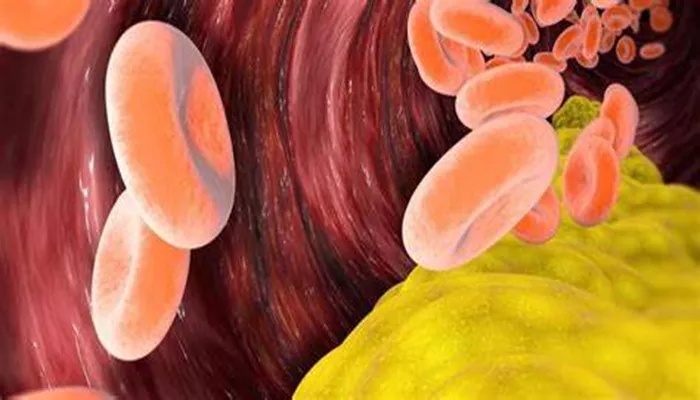Von Gierke disease, also known as Glycogen Storage Disease Type I (GSD I), is a rare genetic disorder that affects the body’s ability to manage glycogen storage and glucose metabolism. This condition is caused by a deficiency in the enzyme glucose-6-phosphatase, which is crucial for converting glycogen into glucose. The inability to carry out this conversion leads to a myriad of metabolic problems, one of the most significant being hyperlipidemia. Hyperlipidemia is characterized by elevated levels of lipids in the blood, including cholesterol and triglycerides. Understanding why von Gierke causes hyperlipidemia involves exploring the biochemical pathways affected by the enzyme deficiency and the subsequent metabolic imbalances.
The Role of Glucose-6-Phosphatase
Glucose-6-phosphatase is an enzyme located in the liver, kidneys, and intestines. Its primary function is to catalyze the final step in both gluconeogenesis and glycogenolysis, converting glucose-6-phosphate into free glucose, which can then be released into the bloodstream. This process is vital for maintaining normal blood glucose levels, especially during fasting periods. In individuals with von Gierke disease, the absence or dysfunction of glucose-6-phosphatase leads to the accumulation of glucose-6-phosphate within cells, as it cannot be converted to free glucose.
Why Does Von Gierke Cause Hyperlipidemia?
1. Metabolic Consequences of Enzyme Deficiency
The accumulation of glucose-6-phosphate triggers several metabolic pathways to compensate for the impaired glucose production. These compensatory mechanisms, however, result in various metabolic derangements, including hyperlipidemia.
2. Increased Glycolysis and Lipogenesis
The high intracellular concentration of glucose-6-phosphate enhances the glycolytic pathway, leading to an overproduction of pyruvate and lactate. This, in turn, promotes the synthesis of fatty acids through de novo lipogenesis. Fatty acids are subsequently converted into triglycerides, contributing to elevated blood triglyceride levels.
3. Impaired Glycogen Breakdown
Since glycogen cannot be effectively broken down into glucose, the body resorts to alternative energy sources. One of these sources is fatty acids, which are mobilized from adipose tissue. The increased release of fatty acids from adipose tissue, coupled with enhanced hepatic fatty acid synthesis, results in elevated levels of circulating triglycerides and cholesterol.
SEE ALSO: The 7 Best Ways to Reduce Hyperlipidemia
4. Altered VLDL Production
The liver packages triglycerides into very low-density lipoproteins (VLDL) for transport in the bloodstream. In von Gierke disease, the increased availability of triglycerides promotes the overproduction of VLDL. Elevated VLDL levels are a hallmark of hyperlipidemia and are associated with an increased risk of cardiovascular disease.
5. Reduced Fatty Acid Oxidation
The presence of excess glucose-6-phosphate and its metabolic intermediates inhibits fatty acid oxidation in the liver. This inhibition further exacerbates the accumulation of triglycerides, as fatty acids that would normally be oxidized for energy are instead stored or secreted as VLDL.
6. Hormonal Imbalances
Insulin resistance is a common feature in patients with von Gierke disease. High insulin levels stimulate lipogenesis while inhibiting lipolysis, leading to increased fat storage and elevated blood lipid levels. Additionally, growth hormone and cortisol, which are elevated in response to hypoglycemia, also promote lipolysis and further contribute to hyperlipidemia.
Clinical Manifestations And Diagnosis
Hyperlipidemia in von Gierke disease often presents with symptoms related to lipid metabolism disorders, such as xanthomas (fatty deposits under the skin) and hepatomegaly (enlarged liver due to fat accumulation). Laboratory findings typically show markedly elevated levels of triglycerides and cholesterol. These lipid abnormalities can be detected through routine blood tests, prompting further investigation into the underlying metabolic disorder.
Diagnosing von Gierke disease involves a combination of clinical evaluation, biochemical tests, and genetic analysis. Key diagnostic indicators include:
Persistent hypoglycemia (low blood sugar levels)
Hyperlipidemia (elevated blood lipid levels)
Lactic acidosis (increased lactic acid in the blood)
Hyperuricemia (elevated uric acid levels)
Confirmatory diagnosis is achieved through genetic testing, which identifies mutations in the G6PC gene responsible for encoding the glucose-6-phosphatase enzyme.
Management And Treatment
Managing hyperlipidemia in patients with von Gierke disease requires a multifaceted approach aimed at correcting metabolic imbalances and preventing complications. Key strategies include:
Dietary Management
Frequent Feeding: Providing regular, small meals rich in complex carbohydrates helps maintain blood glucose levels and reduce the reliance on gluconeogenesis and glycogenolysis.
Cornstarch Therapy: Uncooked cornstarch is a slow-release carbohydrate that can sustain blood glucose levels between meals and overnight.
Low-Fat Diet: Reducing dietary fat intake can help manage lipid levels and prevent excessive triglyceride and cholesterol accumulation.
Medications
Lipid-Lowering Agents: Statins and fibrates can be prescribed to lower cholesterol and triglyceride levels. These medications help reduce the risk of cardiovascular complications associated with hyperlipidemia.
Insulin Sensitizers: Medications that improve insulin sensitivity, such as metformin, can help manage hyperlipidemia by reducing insulin resistance.
Monitoring and Follow-Up
Regular monitoring of blood glucose, lipid levels, and liver function is crucial for managing von Gierke disease. Adjustments to dietary and medication regimens are often necessary based on these monitoring results.
Conclusion
Von Gierke disease causes hyperlipidemia through a complex interplay of metabolic disturbances resulting from glucose-6-phosphatase deficiency. The accumulation of glucose-6-phosphate leads to increased glycolysis, lipogenesis, and impaired fatty acid oxidation, culminating in elevated blood lipid levels. Managing hyperlipidemia in von Gierke disease requires a comprehensive approach that includes dietary modifications, medication, and regular monitoring.
Understanding the biochemical pathways involved in this condition is essential for developing effective treatment strategies and improving the quality of life for affected individuals. As research advances, new therapies, including gene therapy, hold promise for more targeted and curative treatments for von Gierke disease and its associated hyperlipidemia.


